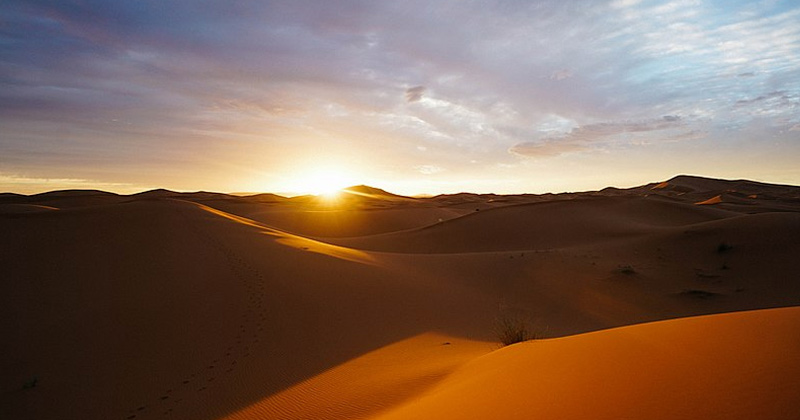Millions of square kilometers of sand and nothing else. Looking at the Sahara desert, one might wonder how the Sahara, this huge desert area, came into being in the first place. How did the sand get into the Sahara Desert? How Sahara desert formed?

There is so much sand that one speaks of the seas of sand. Many Sahara dunes tower up to 300 meters, while others are 1000 kilometers long and weigh countless millions of tons. And yet this huge, almost 10 million square kilometer desert in North Africa consists of just one-fifth of sand. Most of the Sahara is rock or stone. Sandstone. This brings us very close to the answer to the question ‘how did the sand get into the Sahara Desert?’.
Sahara sand is essentially weathered sandstone. In the wet phases of the Sahara, rivers, and lakes provided sand through the weathering rock. In the long dry phases, the sand was then removed and relocated by winds. And there was also the other form of sand. During the last ice age, around 20,000 years ago, both the Mediterranean and the Atlantic were around 100 meters lower than they are today. There were large shelf and coastal areas with much larger beaches back then.
Green Times In The Sahara
Sea sand in the Sahara is there but is there sand from rivers and lakes that are said to have once existed in the Sahara? The Sahara desert hasn’t always been a desert. It was often green, 6000 to 11,000 years ago. And it was even greener 100,000 years ago. For two to two and a half million years, the Sahara has experienced a wet phase about every 100,000 years. And that lasts for a few thousand years.

That sounds like a long time. In the balance sheet of 100,000 years, however, more than 90,000 remain extremely dry just like today. Then the wind dominates the Sahara. This is almost always a trade wind blowing from the north or northeast. It brings the sand south.
Also Read: Carcross! Do you know about the world’s smallest desert or where it lies?
In the wet phases, however, when the Sahara was a fertile savannah landscape, monsoon winds from the south blew over the area. They transported back what trade winds had brought from the north to the south. At least that’s what scientists assume because you can only determine the age of the sands indirectly.
But one thing is clear that it’s about several cycles, about repetitive processes of weathering, low sea levels and drifts from north to south, and the wet and dry phases.
Sahara Dust Fertilizes The Amazon Forest
So the Sahara sand always stays more or less in one place. But with the even finer grains, the Sahara dust, it is completely different. The wind exports it in gigantic quantities. Millions of tons of it are shipped halfway around the world even to the Amazon forest. There, Sahara dust is an important source of minerals. The Amazon forests would not exist without the fertilization from the Sahara.
While Sahara sand which is much coarser than the dust, cannot fly higher than two meters and is therefore always transported close to the ground, Sahara dust can still be found at a height of 10,000 meters. It is created by reduced grains of sand and dried out lake deposits. The Sahara is the greatest source of dust, but what is blown away is then of course lost.

Climate Change Is Shrinking The Sahara
The desert is subject to constant change. And there is possibly a completely different, far more conspicuous and momentous one ahead of us. Climate change is apparently causing the Sahara to green again much earlier than would be the case based on the natural cycle alone. There is no doubt that precipitation is increasing. With more water, the grass comes back and later the mice and birds. When there is more pasture the deer and gazelles return.
Actually, a green Sahara would only be expected again in 60,000 to 80,000 years. It only develops about every 100,000 years. But global warming seems to be accelerating development significantly. It increases the evaporation over the oceans and intensifies the monsoon winds so that in the last two decades much more precipitation has been carried far into the Sahara.
Also Read: It Snowed In Sahara Desert, Again, And God Does It Look Beautiful
It is now the first time that the desert is not re-greening through external factors, through orbital processes, proximity to the sun, etc., but rather through humans, through the climate change they cause. So, now since you know how did the sand get into the Sahara desert, do comment any unknown fact you would like to share about the desert.


